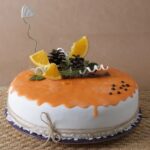Choosing the right icing is crucial for cake decorating success. Whether you’re a professional baker or just someone who enjoys decorating cakes as a hobby, the type of icing you use can make all the difference in the appearance and taste of your creations.
From classic buttercream to flawless fondant, tangy cream cheese frosting to rich ganache, there are endless options available to suit your preferences and the occasion. In this article, we will explore some of the best icing choices for cake decorating and delve into their pros and cons, techniques for achieving beautiful finishes, and flavor variations that will take your cakes to the next level.
One of the most popular choices for cake decorating is buttercream. With its smooth texture and ability to hold various flavors, buttercream allows for endless creativity. We will discuss different variations of buttercream such as Swiss, American, and Italian, along with techniques for achieving smooth finishes on cakes. Additionally, we will explore which flavors pair best with different types of cake.
For those looking for a flawless and professional finish on their cakes, fondant is often the ultimate choice. We will explain what fondant is and how it is used in cake decorating, as well as provide tips for covering cakes with fondant and incorporating decorations and details.
Cream cheese frosting offers a delectable tangy alternative to traditional icings. We will highlight ideal occasions and cake flavors that pair well with cream cheese frosting, provide guidance on achieving perfect consistency and stability when working with this type of icing, along with tips for piping and decorating.
Ganache provides a rich and glossy option that elevates any cake. We will discuss different types of ganache – dark, milk, white – along with their uses for filling glazing or piping onto cakes.
Royal icing is known for its versatility in creating intricate designs while whipped cream provides a light and fluffy option suitable for many fruits and flavors. We will cover techniques using both icings, including piping and flooding, achieving stability in whipped cream, and pairing options.
Finally, we will explore delicious vegan and dairy-free icing alternatives for those with dietary restrictions or preferences. We will discuss popular vegan options as well as tips for achieving the same taste and texture without using any dairy products.
In this article, we aim to help you find the best icing for your cake decorating needs and preferences. So whether you’re looking for a classic choice, a flawless finish, a tangy alternative, a rich option, a versatile choice, or a light and fluffy alternative – we’ve got you covered. Let’s dive into the world of cake decorating with these amazing icings.
Buttercream
Buttercream is a beloved classic choice for cake decorating, known for its creamy texture and ability to be flavored in countless ways. There are several different variations of buttercream, including Swiss, American, and Italian, each with its own unique characteristics. Swiss meringue buttercream is light and silky, while American buttercream is rich and sweet. Italian buttercream is made by adding sugar syrup to egg whites, resulting in a smooth and stable frosting.
One of the advantages of using buttercream for cake decorating is its versatility. Buttercream can be easily colored and piped into various designs, making it perfect for creating intricate details or simply covering a cake in a smooth finish. However, there are some drawbacks to using buttercream as well. It can be susceptible to melting in warm temperatures or humid environments, so it may not be the best choice for outdoor events or hot climates.
Achieving a smooth buttercream finish requires proper technique. Before applying the buttercream to the cake, it’s important to crumb coat the cake with a thin layer of frosting to seal in any loose crumbs. This helps create a smooth base for the final layer of buttercream. To achieve an extremely smooth finish, many bakers use an offset spatula or a bench scraper to smooth out any imperfections on the surface.
When choosing the best flavors for various cake flavors, there are endless possibilities with buttercream. Classic vanilla and chocolate flavors are always popular choices, but you can also experiment with fruity flavors like lemon or raspberry for more refreshing cakes. Rich flavors like caramel or coffee pair well with chocolate cakes, while mint or peanut butter can add an extra dimension of flavor.
Fondant
When it comes to cake decorating, fondant is often hailed as the ultimate choice for achieving a flawless and professional finish. Fondant is a smooth, dough-like icing that can be rolled out and draped over cakes, creating a sleek and polished look. It provides a blank canvas for creative designs and intricate decorations, making it a favorite among professionals.
One of the advantages of using fondant for cake decorating is its versatility. Fondant can be tinted with food coloring to achieve any desired shade or color. This allows decorators to match the theme or color scheme of any event or celebration. Fondant also has a relatively long shelf life, making it convenient for preparations ahead of time.
Covering a cake with fondant requires some special techniques in order to achieve a smooth and flawless finish. It is important to properly prepare the cake by applying a layer of buttercream or ganache as an adhesive before rolling out the fondant. This helps the fondant adhere to the cake surface without any air bubbles or wrinkles.
Incorporating fondant decorations and details adds an extra level of elegance to cakes. Fondant can be easily shaped into flowers, bows, figures, and various other designs. These decorations can either be pre-made or created on-site during the assembly process. It’s important to let each piece dry before placing them on the cake to prevent them from sagging or losing their shape.
Overall, if you are looking for a flawless and professional finish for your cakes, fondant is definitely worth considering. Its versatility and ability to create stunning designs make it a go-to choice for many pastry chefs and decorators alike.
Cream Cheese Frosting
Cream cheese frosting is a beloved choice for cake decorating due to its creamy texture and tangy flavor. It pairs exceptionally well with a variety of cake flavors, making it a versatile option for any occasion. In this section, we will explore the ideal occasions and cake flavors for cream cheese frosting, as well as tips for achieving the perfect consistency and stability in your frosting.
Ideal Occasions and Cake Flavors
Cream cheese frosting is commonly associated with classic flavors such as carrot cake and red velvet cake. Its tangy sweetness complements these rich flavors perfectly, creating a balance that is truly irresistible. However, cream cheese frosting can also be used with other cake flavors such as banana, spice, or lemon to add an extra layer of flavor.
When it comes to occasions, cream cheese frosting shines in both casual gatherings and formal events. Its rustic appearance and delicious taste make it a popular choice for birthday parties, potlucks, or family gatherings. On the other hand, when piped elegantly or decorated with finesse, cream cheese frosting can elevate wedding cakes or special occasion cakes to new heights.
Achieving the Perfect Consistency and Stability
To ensure that your cream cheese frosting has the perfect consistency for decorating, it is important to start with ingredients at room temperature. This includes softened butter and cream cheese. Be sure to beat them together until smooth before adding any other ingredients.
Another key factor in achieving the desired consistency is the amount of powdered sugar you use. Adding too much powdered sugar can result in an overly sweet frosting that becomes difficult to work with. Start by gradually adding small amounts of powdered sugar until you reach your desired taste and consistency.
To enhance stability while piping or creating intricate decorations, consider adding a small amount of cornstarch or meringue powder to your cream cheese frosting. These additives help stiffen the mixture slightly without compromising flavor.
Tips for Piping and Decorating
Cream cheese frosting can be piped into beautiful designs using various piping tips and techniques. For more intricate designs, use a smaller round tip or a star tip. If you prefer a more rustic look, try using an offset spatula to create textured swirls or waves.
When it comes to decorating with cream cheese frosting, consider incorporating additional elements such as fresh fruit, edible flowers, or chopped nuts. These add-ons not only enhance the visual appeal but also complement the tangy flavor of the frosting.
Delicious Flavor Variations
While classic cream cheese frosting is undeniably delicious, there are several flavor variations that can take your cakes to new heights. Consider incorporating ingredients such as citrus zest, cocoa powder, or even spices like cinnamon or nutmeg to add depth and complexity to your cream cheese frosting. Experimenting with different flavors can result in unique and mouthwatering combinations that will impress any dessert enthusiast.
Ganache
Ganache is a versatile icing that is known for its rich and glossy finish. It is made by combining chocolate with heated heavy cream, resulting in a smooth and luxurious texture. Ganache can be used for filling, glazing, or piping on cakes, making it a popular choice among bakers and cake decorators.
There are different types of ganache that can be used depending on the desired flavor and appearance. Dark chocolate ganache has a deep and intense flavor, while milk chocolate ganache has a sweeter taste. White chocolate ganache is creamy and delicate in flavor. Understanding the properties of each type of ganache can help you pair it perfectly with different cake flavors.
To achieve a flawless and smooth ganache finish, it is important to properly prepare and apply the icing. Start by heating the heavy cream until it begins to simmer, then pour it over finely chopped chocolate. Let the mixture sit for a few minutes before stirring until smooth. Allow the ganache to cool slightly before pouring or spreading it onto the cake. For a thicker consistency, refrigerate the ganache until firm but still spreadable.
Pairing different cake flavors with ganache can enhance both the taste and appearance of your creations. Dark chocolate ganache complements rich and dense cakes like chocolate or red velvet, adding depth to their flavor profiles. Milk chocolate ganache works well with lighter-flavored cakes such as vanilla or strawberry, creating a balanced sweetness. White chocolate ganache pairs beautifully with citrus or fruity cakes, offering a creamy contrast.
| Ganache Type | Flavor | Ideal Pairings |
|---|---|---|
| Dark Chocolate Ganache | Deep and intense | Chocolate, red velvet cakes |
| Milk Chocolate Ganache | Sweet and rich | Vanilla, strawberry cakes |
| White Chocolate Ganache | Creamy and delicate | Citrus, fruity cakes |
Royal Icing
When it comes to cake decorating, royal icing is a versatile and decorative choice that can elevate your creations to the next level. Known for its smooth, shiny finish and ability to hold intricate designs, royal icing is a favorite among professional bakers and cake decorators alike. In this section, we will explore the characteristics of royal icing, techniques for achieving stunning designs, best practices for flooding cookies, and tips for working with royal icing in different climates.
Characteristics and Uses of Royal Icing
Royal icing is made primarily from powdered sugar and egg whites or meringue powder. This creates a thick yet pliable consistency that dries hard and smooth. One of the key advantages of royal icing is its versatility – it can be used for various decorating techniques such as piping intricate lace patterns, creating beautiful borders, or even building three-dimensional structures on top of cakes.
Piping Techniques and Designs
The beauty of royal icing lies in its ability to be piped into intricate designs with ease. With the right consistency and proper technique, you can create stunning flowers, intricate lacework, delicate filigree patterns, or personalized messages on your cakes. Practice with different piping tips to achieve various effects such as ruffles, dots, leaves, or fine lines. Be sure to let each layer dry before adding another one to prevent smudging or bleeding.
Best Practices for Flooding Cookies
Flooding cookies with royal icing allows you to create beautiful yet vibrant designs on flat surfaces. To achieve the best results, start by outlining the area you want to flood using a stiff consistency royal icing. Once the outline has dried completely (usually within 30 minutes), thin down some more royal icing with water until it reaches a pourable consistency.
Carefully pour the thinned icing within the outlined area and use a toothpick or small spatula to spread it evenly. Allow the flooded area to dry completely before adding any additional details on top.
Tips for Working with Royal Icing in Different Climates
Working with royal icing can be challenging in certain weather conditions, especially high humidity or dry environments. In humid climates, royal icing may take longer to dry and can become sticky. To counter this, use a dehumidifier in your workspace or add a small amount of cornstarch to the icing.
On the other hand, if you’re working in a dry environment, cover your bowls of royal icing with a damp cloth to prevent it from drying out too quickly. Additionally, adjusting the consistency of the icing by adding more water or powdered sugar can help you achieve different effects depending on your climate.
Royal icing opens up endless possibilities for creating intricate and decorative designs on your cakes and cookies. With its versatility and smooth finish, it is no wonder that royal icing remains a popular choice among cake decorators. Whether you are piping delicate flowers or flooding cookies with vibrant colors, royal icing is sure to impress both visually and tastefully.
Whipped Cream
Whipped cream is a popular choice for cake decorating due to its light and fluffy texture. It adds a delicate and airy touch to any cake, making it perfect for lighter desserts or those with a fruitier flavor profile. Whipped cream can be used in various ways, from frosting the entire cake to creating decorative designs.
One important consideration when using whipped cream for cake decorating is stability. To ensure that your whipped cream holds its shape and doesn’t deflate, it’s essential to stabilize it properly. There are several techniques you can use to achieve this:
- Chill your mixing bowl and beaters in the freezer prior to whipping the cream.
- Add a stabilizing agent such as gelatin, cornstarch, or powdered sugar to the whipped cream.
- Whip the cream on low speed initially and gradually increase the speed as it thickens.
- Avoid overwhipping, as this can lead to a grainy texture and butter separation.
Once you have achieved stable whipped cream, you can start decorating your cake. Some popular decorating ideas include:
- Piping rosettes or borders around the edges of the cake using a piping bag fitted with a star tip.
- Creating soft peaks or dollops on top of the cake for an elegant yet effortless look.
- Decorating with fresh fruits such as berries or citrus slices for a burst of color and added freshness.
Whipped cream pairs well with a variety of flavors, particularly those that are fruity or light. Consider pairing it with cakes that feature flavors like strawberry, lemon, or mango for a delightful combination. The versatility of whipped cream allows you to get creative with your cake designs while maintaining a light and delectable finish.
Vegan and Dairy-Free Icings
For those who follow a vegan lifestyle or have dietary restrictions, there are plenty of delicious icing options available that do not contain any animal products or dairy. These vegan and dairy-free icings can be just as decadent and flavorful as their traditional counterparts, making them a perfect choice for anyone looking to enjoy a delicious cake without compromising their dietary choices.
Popular vegan alternatives for icing cakes include:
- Vegan Buttercream: Made with plant-based butter or margarine substitutes, vegan buttercream offers a smooth and creamy texture that is perfect for piping intricate designs onto cakes. It can be easily flavored with extracts like vanilla, almond, or even fruit purees to add a burst of flavor to your cakes.
- Coconut Whipped Cream: Using canned coconut milk that has been chilled overnight, you can create a luscious whipped cream alternative that is both creamy and slightly sweet. This coconut whipped cream is perfect for layering between cake layers or spreading on top of cupcakes.
Dairy-free options suitable for those with allergies or dietary restrictions include:
- Nut-Free Icing: By using ingredients like sunflower seed butter or soy-based cream cheese substitutes, you can create an icing that is completely free from nuts, making it safe for those with nut allergies to enjoy.
- Oat Milk Ganache: Instead of using traditional dairy milk in ganache recipes, oat milk can be used as a dairy-free alternative. When mixed with high-quality dark chocolate, oat milk creates a rich and glossy ganache that adds an indulgent touch to any cake.
When working with these vegan and dairy-free icings for cake decorating, there are some tips and tricks to keep in mind:
- Ensure all ingredients used are labeled as vegan or dairy-free.
- Adjust the consistency of the icing by adding more powdered sugar (for thickening) or non-dairy milk (for thinning).
- Use high-quality vegan butter or margarine substitutes for the best flavor and texture.
- Chill the icing before piping it onto cakes to ensure it holds its shape.
Whether you follow a vegan lifestyle, have food allergies, or simply want to explore new and exciting icing options, these delicious vegan and dairy-free icings will surely impress your taste buds and add a beautiful touch to your cakes.
Conclusion
In conclusion, when it comes to cake decorating, choosing the right icing is crucial for achieving success. The various options available each have their own unique qualities and characteristics that can enhance the overall look and taste of your cake.
Whether you prefer the classic choice of buttercream, the flawless finish of fondant, the tangy alternative of cream cheese frosting, the rich and glossy option of ganache, the versatility of royal icing, the light and fluffy option of whipped cream, or the delicious vegan and dairy-free alternatives, there is an icing out there to suit your needs and preferences.
Buttercream has always been a favorite among bakers for its endless flavor possibilities and smooth finishes. With different variations such as Swiss, American, and Italian buttercream, you can customize your icing to match any cake flavor. However, if you’re looking for a flawless and professional finish for your cakes, fondant is the ultimate choice. While it may require some practice to achieve a perfectly covered cake, fondant offers a sleek and polished look that is ideal for special occasions.
For those who prefer a tangy twist to their cakes, cream cheese frosting provides a delectable alternative. It pairs perfectly with certain cake flavors and offers stability for piping and decorating. On the other hand, ganache brings richness and glossiness to your creations. With different types such as dark, milk, or white chocolate ganache, you can pair them with various cake flavors for an indulgent treat.
If you enjoy intricate designs and decorative details on your cakes, royal icing is a versatile choice that allows for intricate piping techniques and designs. From flooding cookies to creating delicate decorations on cakes, royal icing offers endless possibilities. For those who prefer a lighter option without sacrificing taste or texture, whipped cream provides a fluffy burst of flavor that pairs well with fruits and other flavors.
Lastly, there are numerous delicious vegan alternatives available for those following a plant-based diet or individuals with dietary restrictions or allergies. These alternatives can replicate the taste and texture of traditional icings without the use of dairy products, ensuring that everyone can enjoy a beautifully decorated cake.
Frequently Asked Questions
What kind of icing is best for decorating cakes?
The kind of icing that is typically considered best for decorating cakes is buttercream icing. Buttercream is a versatile frosting made from butter, powdered sugar, and flavorings such as vanilla extract. It has a smooth and creamy texture that makes it easy to spread and pipe onto cakes, allowing for various decorative designs and techniques.
Since buttercream can be colored and flavored in different ways, it offers endless possibilities for creative cake decorations. Its soft texture also allows for easy adjustments or corrections during the decorating process.
What frosting do professionals use?
Professionals often use Swiss meringue buttercream as their go-to frosting for cakes. Swiss meringue buttercream is made by whisking egg whites and sugar over a double boiler until the sugar dissolves, then whipping in softened butter until light and fluffy.
This type of frosting provides a silky-smooth texture that professionals prefer because it can hold intricate piping details well without sacrificing stability. Swiss meringue buttercream also has a less sweet taste compared to other frostings, which allows the flavors of the cake itself to shine through.
What icing is used on professional cakes?
When it comes to professional cakes, fondant is commonly used as an icing to create a smooth and polished finish. Fondant is a pliable sugar paste that can be rolled out and draped over the cake surface, creating a flawless appearance. It provides a clean canvas for intricate designs or sculptural elements on cakes since it allows for sharper edges compared to other types of icings.
Fondant also acts as a protective layer that helps keep the cake moist over time, making it ideal for elaborate cake creations intended to be displayed at special events or celebrations. However, it’s worth noting that fondant is not usually consumed with each bite of the cake due to its more sugary texture, so another layer of filling or frosting may be applied underneath it for added flavor and moisture.

Welcome to my blog about home and family. This blog is a place where I will share my thoughts, ideas, and experiences related to these important topics. I am a stay-at-home mom with two young children. I hope you enjoy reading it! and may find some helpful tips and ideas that will make your home and family life even better!





